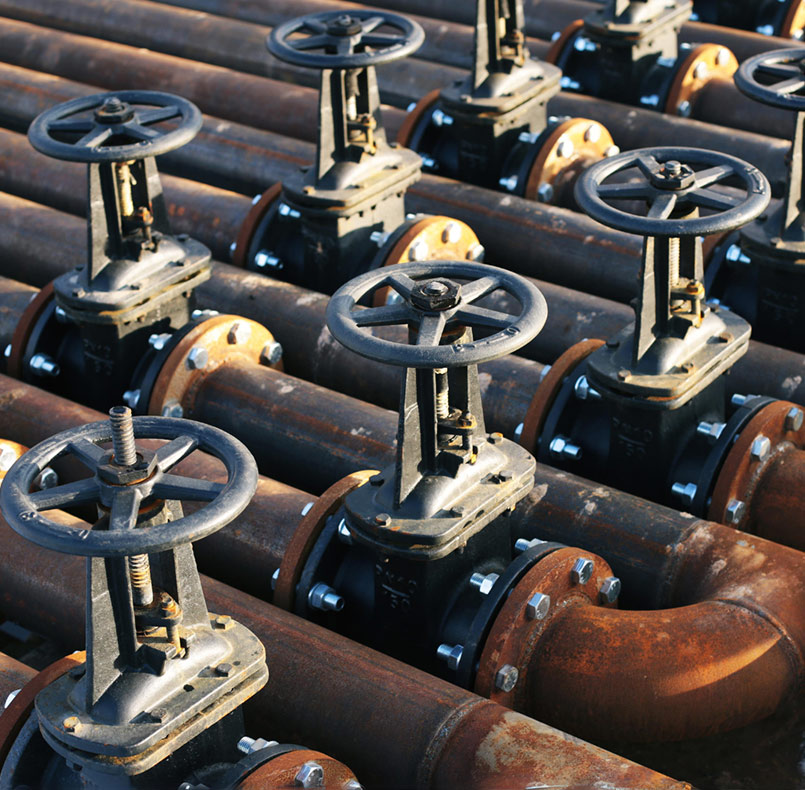
Distribution
The distribution of fluids - water, gas or other substances - through connecting networks is a fundamental process in many applications, such as water supply, natural gas distribution, transport of liquids in industry, and many others. Below, we provide a brief illustration of how fluid distribution networks operate:
Network of pipes or conduits
Origin Points
The fluid is supplied from a main source, such as a reservoir, treatment plant, transport network or other sources.
Pipes or Pipelines
The fluid is conveyed through a network of pipes or conduits that connect the points of origin to the points of consumption or use. These pipes can vary in size, materials and configurations depending on requirements and the type of fluid.
Valves and Control Devices
Along the network, valves and control devices are placed to regulate the flow, stop the fluid in an emergency or allow selective passage in certain directions.
Pressure and flow
Pression
Fluid distribution often involves the need to maintain adequate pressure to ensure that the fluid reaches the points of consumption or use with the right intensity. This may require the use of pumps or pressure-boosting devices at certain points in the network.
Flow
The flow of fluid through the network is regulated by the pressure and capacity of the pipes. The size of the pipes and their layout influence the speed and quantity of fluid that can be transported.
Points of consumption or use.
Houses and Industries
In water distribution systems, consumption points can be homes, businesses, industrial facilities and more. In gas distribution systems, they may include heating equipment, cookers, electronics and more.
Equipment and Usage
The fluid is used to power specific equipment or for different purposes. For example, water can be used for personal hygiene, irrigation, industrial cooling or the production process. Natural gas can be used for domestic heating, cooking and power generation.
Maintenance and Monitoring
Maintenance
Regular maintenance is essential to ensure that the network is in good condition and that there are no leaks or faults.
Monitoring
The use of advanced monitoring systems, such as flow sensors and leak detection devices, can help identify and address problems in the distribution network in a timely manner.
In summary, fluid distribution networks are a complex system of pipes, valves and control devices that transport fluids from a main source to points of consumption or use. Careful design, regular maintenance and control are essential to ensure that the fluid is distributed safely and efficiently.
